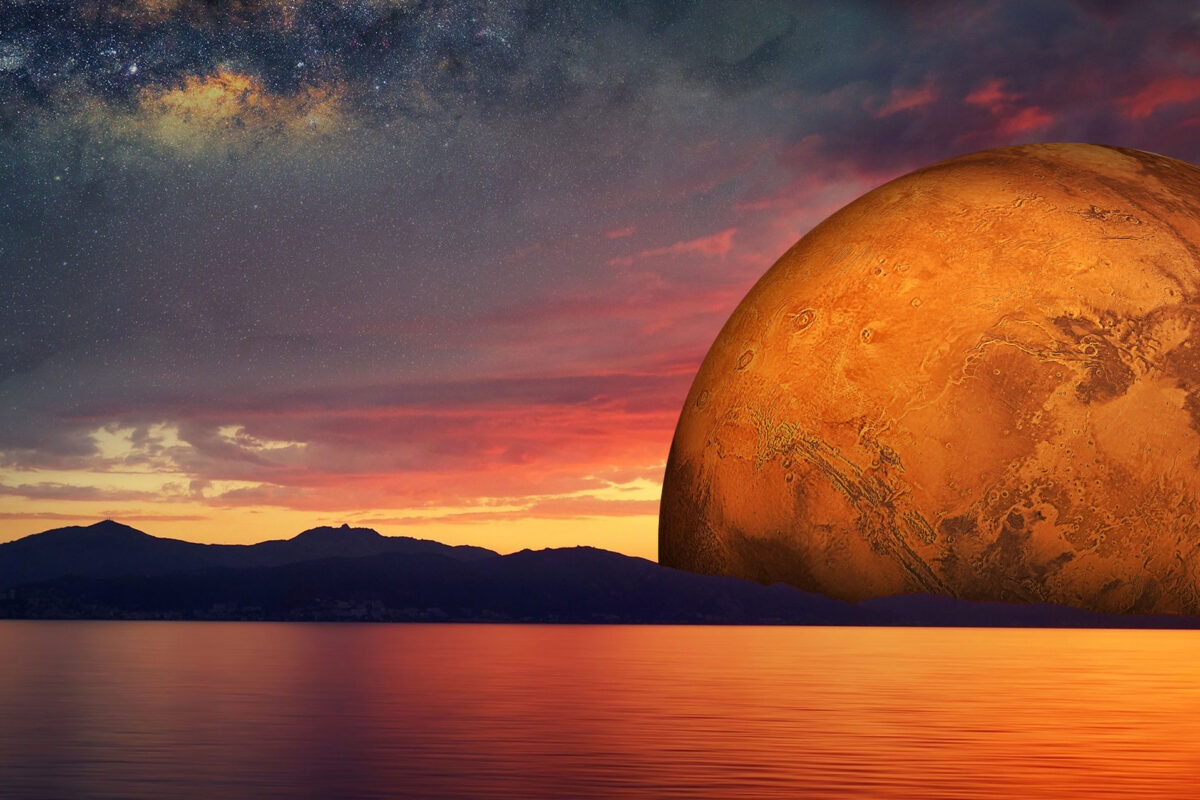
Moons of October – Part 3 – Red October
OK, Mars won’t be that visible. The two previous posts talked about the two full moons in October 2020, the Harvest Moon on October 1st and the Hunters Moon on October 31st. Nearly halfway between these full moons, Mars comes into opposition on October 13th, rising as the Sun sets. This is near the time of closest approach of Earth and Mars in the course of their paths around the Sun (October 6th 2020). Mars oppositions occur roughly every 26 months. Mars is a relatively small planet and its apparent brightness (magnitude) is dependent on its apparent diameter, so much of the time Mars is relatively inconspicuous compared to Jupiter, Venus and Saturn. However, for a couple months around opposition it brightens considerably and its baleful red gleam stands out against the stellar background. It will reach magnitude -2.6 (smaller magnitudes are brighter) in 2020, slightly brighter than Jupiter. Mars has the most eccentric orbit of all the planets, with an eccentricity of 0.093. This led Johannes Kepler to discover that planets move around the Sun in ellipses rather than circles. It means that the distance to Earth around opposition varies considerably, from 0.37 AU at Mars’ perihelion to 0.68 AU at Mars’ aphelion (AU = astronomical unit = 92.96 million miles). The differences in the apparent size of the Martian disk from this variation places limits on how much surface detail can be observed from Earth around different oppositions. The apparent diameter will reach a maximum of 22.6 arc seconds this year, and it will be 2033 before we’ll see Mars with an apparent diameter larger than 20 arc seconds again, so enjoy the view if you can.
H.G. Wells captured Mars in the public imagination with his novel, “The War of the Worlds”. The Martians in his story are supposed to be a much older race than man, and their malevolent behavior reflected the expansion of cold intellect and elimination of emotion and empathy Wells had extrapolated for human evolution in an earlier essay. In 1938, as the world teetered on the brink of WWII, a Welles named Orson created a panic with an American radio drama adaptation of H.G.’s novel. The impact of the Halloween broadcast was amplified in a public relatively new to radio and accustomed to getting news bulletins over the air. It might be considered the first broadcast “fake news”.
Mars has two small moons, named Deimos (Greek “terror” or “dread”) and Phobos (Greek “fear”) after the mythological sons of Mars, though large telescopes and good conditions are needed to see them even at opposition, so they weren’t discovered until 1877. Interestingly, Johnathon Swift’s satiric “Gulliver’s Travels” described the discovery of two moons of Mars by the fictional inhabitants of Laputia 151 years earlier. Astrologically, Mars is the planet of passion, war, anger, assertion and separation. Its prominence in this time of pandemic, economic and political crises is somehow fitting.
Look to see Mars close to the nearly full moon on the evening of October 29th.